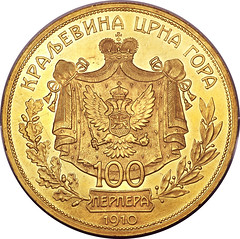
PREV ARTICLE
NEXT ARTICLE
FULL ISSUE
PREV FULL ISSUE
THE CENTRAL BANK OF MONTENEGRO MONEY MUSEUMNumismatourist Howard Berlin submitted this report on his recent trip to the Central Bank of Montenegro Money Museum. Thanks! -Editor
This is my first trip of 2019. Several months ago I wasn't sure if I would be able to travel so soon, or ever again for that matter. About a week after arriving home from my trip to Hungary in November, I suffered a heart block and was rushed to the hospital. Five days later I left the hospital, now fitted with a pacemaker. Now I feel like the Timex watch that "takes a licking and keeps on ticking." In February, post-pacemaker implant, I traveled to Montenegro. Even though the office of the Central Bank of Montenegro is located in its capital of Podgorica, I made a day trip to its former capital, Cetinje, where the major national museums are located. I went to the Central Bank of Montenegro Money Museum where I was met by its curator, Jovan Muhadinovic. The building housing the museum is the former Montenegrin Bank established in 1906, and is now a state protected monument. 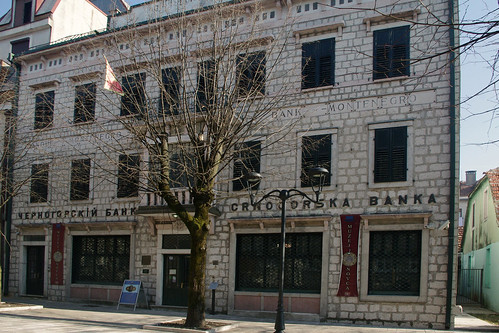
The Central Bank of Montenegro Money Museum
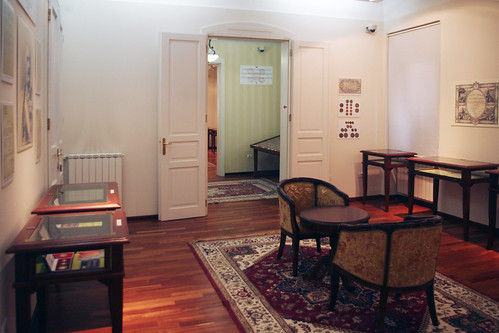
A view of one of the galleries that house 41 display cases.
The Museum's exhibits occupy the first two floors of the building. The second floor has 41 cases with more than 1,000 coins and banknotes on display in the theme "From Perper to Euro." As its title suggests, there are many changes in the money's denominations. These include coins from the Austro-Hungarian Empire (1851-1906), and importantly a virtually complete collection of the coins and banknotes used in Montenegro from the perper (1906-1916) to the end of the dinar (2003), when it was replaced by Deutsche mark as its legal tender. In between, coins and banknotes are from the Montenegrin Kingdom, Kingdom of Serbs, Croats, and Slovenes, Kingdom of Yugoslavia, the German Occupation (1941-1945), Independent State of Croatia (1941-1945), Yugoslavia (1945-2003), Union of Serbia and Montenegro (2003-2006). 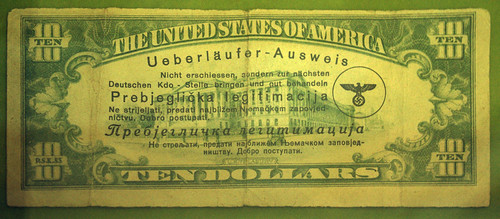
On display is a $10 note with a Nazi overprint. Functioning as a "Deserter Pass," the legend in German, Serbian and Croatian, essentially says: "Don't shoot, take this man to the nearest German Command Post and treat him well".
Although Montenegro is not yet a member of the European Union or its monetary union, it nevertheless uses the euro as its official currency.  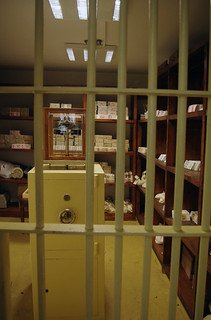
LEFT: The 1849 minting machine (that still runs),used for minting the first Montenegrin coins and still used for minting promotional coins.
The ground floor of the museum has many examples of money incorporated as jewelry. These are necklaces, earrings, and head ornaments. Also on the ground floor is a working coin stamping press from 1849 and the original vault from the 1906 Montenegrin Bank. 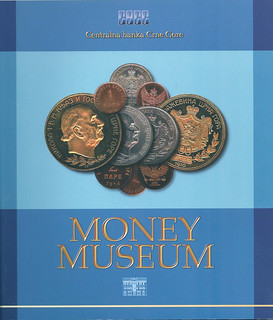 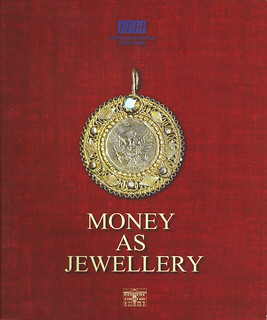
After presenting the Bank with a copy of my book, "The Numsmatourist," Jovan reciprocated by giving me copies of two books produced by the Museum: Money Museum (2012, 152 pages, Radoje Žugić ed., ISBN 978-86-85815-12-6). Inquiries for those interesting in purchasing this book should be directed to Jovan Muhadinovic at jovan.muhadinovic@cbcg.me. The other book, Money as Jewellery [sic] (2017, 42 pages, ISBN 978-86-85815-16-4) details the current exhibition. However, it is available as a free pdf download at: https://cbcg.me/en/currency/money-museum/publications with the link: https://cbcg.me/uploads/MONEY%20AS%20JEWELLERY%20Novembar%202017.pdf 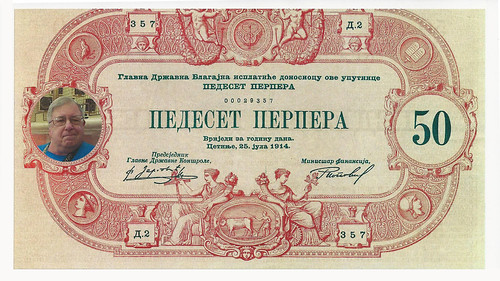
As if that wasn't enough, the Museum provided me with a souvenir 1914 50 perper banknote with my picture as a vignette on the front. Visitors are able to purchase their own. Thanks, Howard. Glad you're healthy again and back on the road. Cool souvenir note. And that's the first I've seen or heard of a "Deserter Pass" overprint on a U.S. banknote. -Editor

Wayne Homren, Editor The Numismatic Bibliomania Society is a non-profit organization promoting numismatic literature. See our web site at coinbooks.org. To submit items for publication in The E-Sylum, write to the Editor at this address: whomren@gmail.com To subscribe go to: https://my.binhost.com/lists/listinfo/esylum All Rights Reserved. NBS Home Page Contact the NBS webmaster 
|
